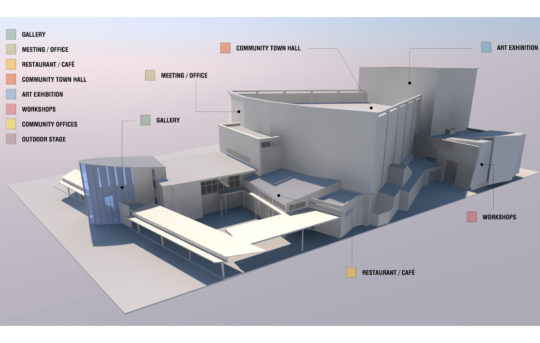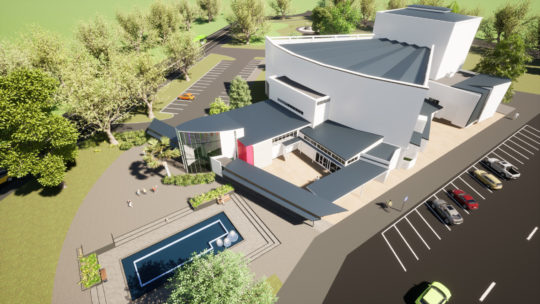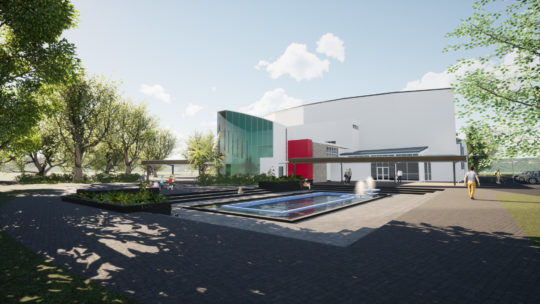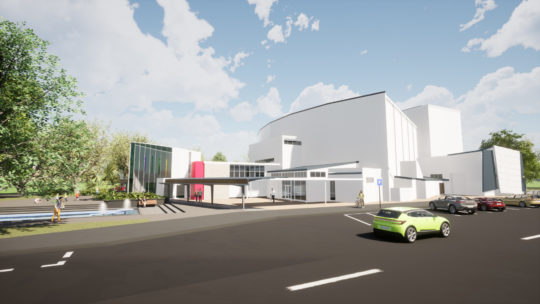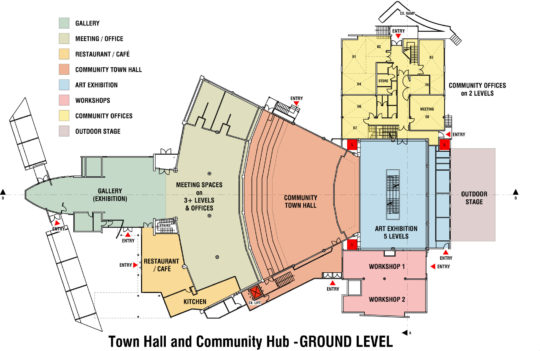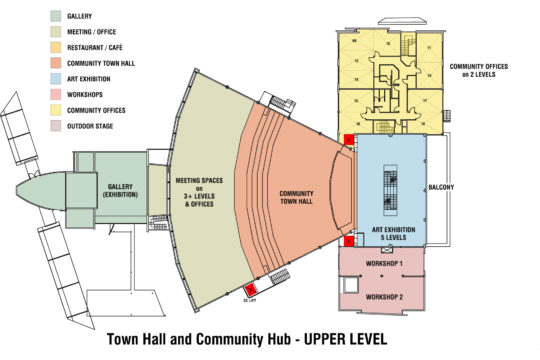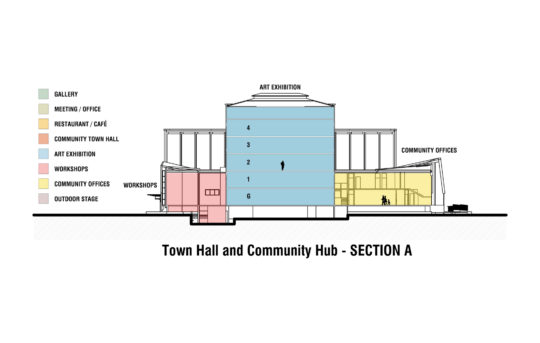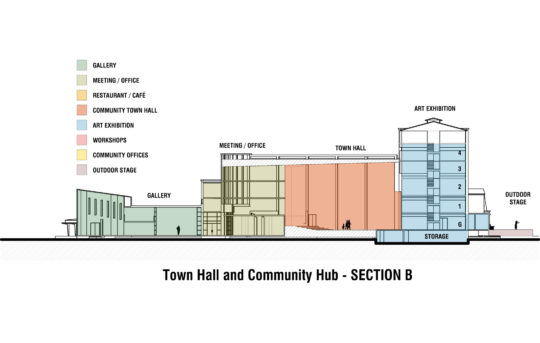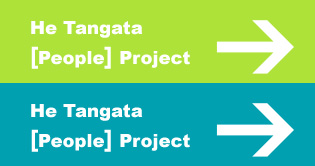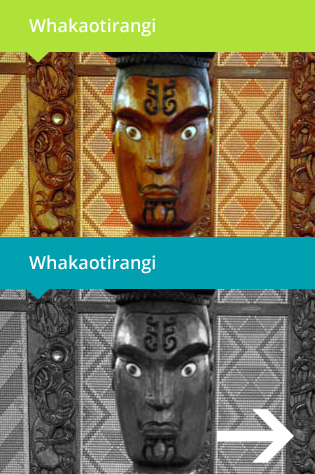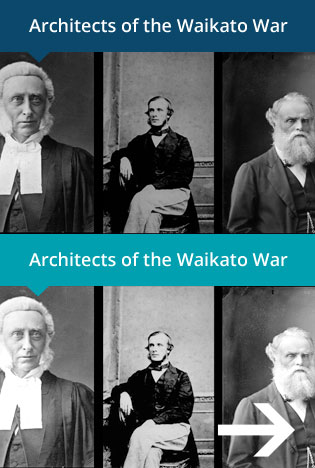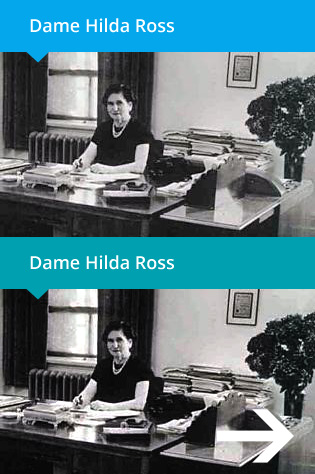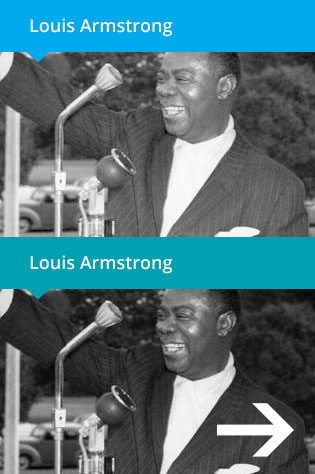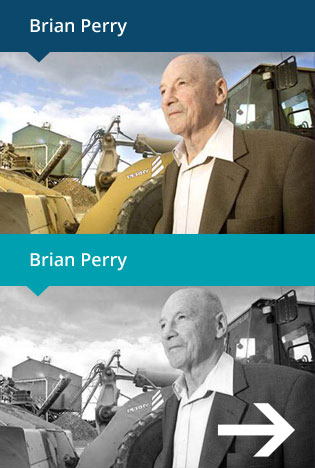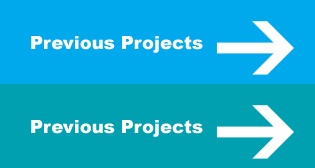Saving Hamilton’s Founders Theatre and Hamilton’s Alternative 10-Year-Plan- 2021-2031 (Submissions)
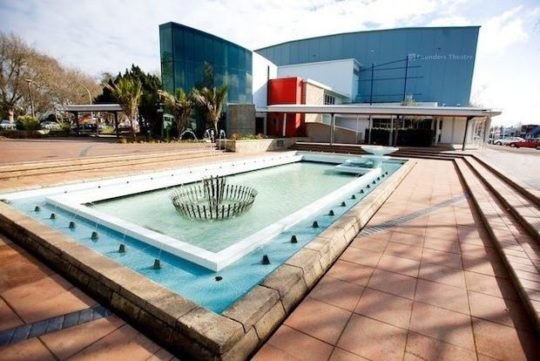
Hamilton City Council has voted 7/6 for a plan to demolish Founders Theatre and spend $3.6million potentially converting the site into green space.
This narrowly won decision came on 8 December 2020 as the council prepared their new 10-year plan, due for sign off on 25 February before public consultation in March-April and implementation from 1 July this year (2021).
TOTI in conjunction with heritage advocate Neil Curgenven and others have made two submissions to Council expressing our interest in rehabilitating and converting the theatre into a multi-purpose public space, a Town Hall for Arts, Culture and Heritage, to include galleries and community rooms.
What we propose would NOT be a theatre, and therefore would NOT compete with the proposed new regional theatre (nor the other city theatres). This is a sustainable community project and will create short-term and long-term jobs. The intention is to provide affordable facilities to a wide range of groups, a public meeting space in a heritage environment and sited in a beautiful and easily accessible green belt. This will augment public opportunities to present, participate and engage in heritage, arts and cultural activities.
If like us, you would like to see the rehabilitation and rejuvenation of the Founders, there will be another opportunity to have your say by making a public submission in response to the draft annual plan in March.
And you can sign the petition to save the Founders here.
TOTI has twice formally approached the council seeking to retain and restore the Founders Theatre. We have now also given our formal support to the nomination to Heritage New Zealand Pouhere Taonga seeking classification of the theatre and the associated surrounds as a Category 2 historic place of significance. This matter is expected to be considered in late February (2021). The author of the nomination remains a mystery to us but their application has our full support
A bit of history
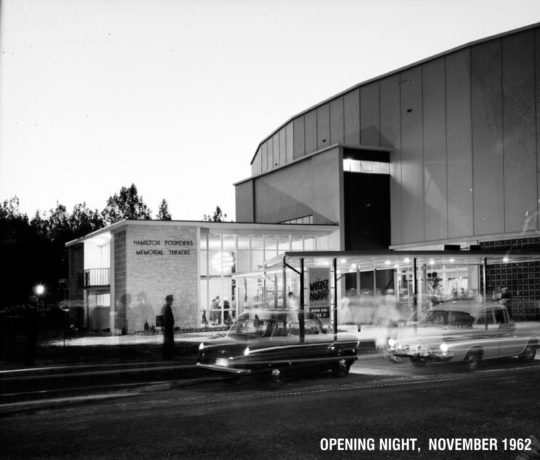
Founders Theatre opened in 1962 after a community fund-raising campaign and was closed by Hamilton City Council in 2016 following safety, fire, and earthquake concerns. Costs quoted by the council to reopen the doors range from $12m-$30m
Back then, plans quickly emerged for a new regional theatre on the city’s riverbank initially estimated at $50m and by 2020 at $78m. The council committed $25m, plus the promise of an annual grant of $1.2m to the proposed new theatre’s private trust board, with public references in 2018 to $6m from city funds from liquidating the Vibrant Hamilton Trust and another $6 million from the sale of council shares in Waikato Innovation Park.
Late in 2020, the Government committed $12m adding to the Waikato Regional Council and local trusts’ contributions taking the total close to requirements, and at the time of this post (January 2021) a construction start indicated early this year..
Founders Theatre reborn
Twice last year (2020) TOTI made submissions with heritage advocate Neil Curgenven expressing our interest in rehabilitating and converting the Founders Theatre and site into a multi-purpose public space – a Town Hall for Arts, Culture and Heritage, to include galleries and community rooms.
Although the council’s December 2020 report quoted 84% community support for its demolition plan, not reported was a deeper analysis of the community responses to their ‘have your say’ website questionnaire format. This showed most of those submitters also supported activities “honouring the heritage of the site”, including “storytelling” through “interpretive panels” and “public art”, “exploring sound, music and performance in fun and playful ways”, and “retaining and re-adapting parts of the building for new uses”
All these activities reflect TOTI’s own consultation and input into the rejuvenation plan for the heritage theatre spaces.
Heritage architectural plans
Peddle Thorp architects’ director Mike Angelo and Mark de Lisle and their team are generously working with us on the Founders Theatre rejuvenation project. Mark is the son of the theatre’s architect Aubrey de Lisle and has made his original drawings available.
These ideas are the result of some great discussions with lots of people and we welcome comments and further input and ideas…
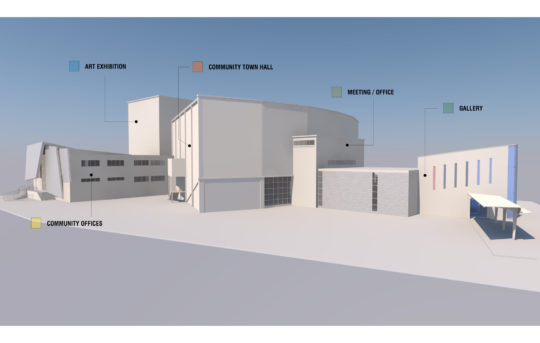
History and heritage
Thousands of people have performed on stage at the Founders Theatre over the five-plus decades of its initial arts, cultural and civic life, and many, many more in the audiences for everything from school prize-givings and citizenship ceremonies to local theatre and kapa haka to international greats and those about-to-be….
Back in 2013, TOTI worked with film buff Dr Richard Swainson to mark the Founders Theatre 50th anniversary to mark the historic performance of the great Louis Armstrong and the first international star to feature there
Richard operates Auteur House, the epic films for hire business in Hamilton
https://www.facebook.com/AuteurHouse/
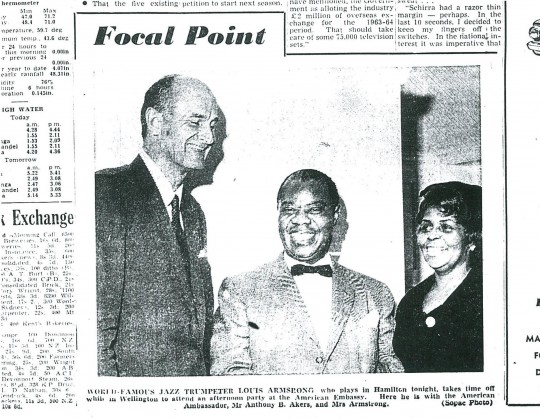
Waikato Times, March 20 1963, p20
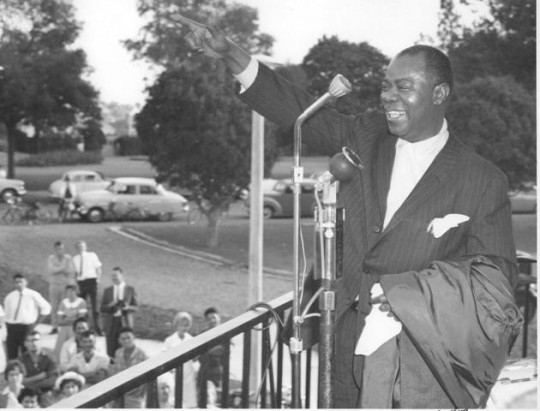
Bill Lindberg’s shot of ‘Satchmo’ chatting to fans
Hamilton’s Alternative 10-Year-Plan – 2021-2031 (Submissions)
-
INTRODUCTION
Extraordinary circumstances
Our nation has extraordinary challenges ahead of us.
- Covid-19
- Climate crisis (international commitment to reduce carbon emissions)
- Economic uncertainty
- Exploding house prices
- Social unrest (democratic disengagement, poverty and inequality, Maori claims etc)
- Government’s local government reform agenda (3Waters & RMA)
Hamilton City is our focus, to be a model for other communities…
- Proposed – Alternative Hamilton City Council 10-year-plan with key actions/projects
- Evidence based – robust research and case studies
- Restoration of local democracy – engagement and accountability
Opening statement
Councils are the ‘local’ part of our government.
Councils’ job is to promote what are termed the ‘four well-beings’ now and for the future. That’s outlined in the Local Government Act 2002 (and amendments) meaning that councils must consider economic, environmental, social and cultural matters, and overall sustainability when deciding what to include in their plans and activities. Councils also craft ‘visions’ to explain their targets or goals.
All this must be done with public consultation, giving opportunities for people within the community to have their say.
As well, councils by law must report on ‘community outcomes’, in other words, the results from their activities and their progress towards the visions they have selected. And review all this, every three years.
This is not new. Councils have been doing this for the past three decades. The majority of people have become disengaged.
Where we differ:
We are a diverse cross section of the community who are calling upon Council to be brave, step up to the challenge.
We ‘outsiders’ decided to work together and come up with an Alternative 10-Year-Plan, setting out some key actions and ideas gathered up from listening to what people are saying.
The authors of this alternate 10-Year-Plan are now calling upon the Council to amend their Draft Plan, add in our recommendations and adopt a new version that is realistic and sustainable, reflecting residents’ vision for the future, and not yet another spending spree. Truly transformational.
It is essential to have a plan that addresses council financial affairs, remedies past problems, and looks ahead with innovation and courage.
A cautionary note has come from the Auditor-General’s appointed auditor. She commented on the council’s business-as-usual approach when current central government reforms on Three Waters services “may result in significant changes” and the information basis of the council’s Draft Plan.
Our Alternative Plan
Hamilton City Council is planning to collect $226 million from ratepayers this year (from 1 July). That’s an extra $26 million on the previous year and an increase of 8.9% to existing ratepayers. Over the next decade, Hamilton City Council is proposing to spend $3.7 billion “on the everyday costs of running the city”, plus $2.5 billion on capital projects. The council’s net debt will increase to $631 million in the coming year, rising to a billion in five years (2025) and up to $1.189 billion in 2031. Projections are based on moderate growth.
This alternative plan includes projects, anticipated costs and savings, as well as matters requiring more detailed assessment.
Projects – We have clustered projects for clarity and fit with the ‘four well-beings’ (economic, environmental, social and cultural), and to illustrate the essential aspect of cross-corridor integrated thinking and assessment rather than the narrow silo approach in the ‘business as usual’ space illustrated by the recent fixation with ‘big projects’.
Community Engagement – For the challenging decade ahead of us, we include institutional changes to boost community engagement and decision-making quality, with climate change and social cohesion in mind. All our recommendations come from listening to the people.
Costs – We are mindful of the common view that council projects (and government’s) are over-designed and over-priced with un-business-like contracting arrangements ripe for adding increased costs, and rarely illustrate integrated planning or innovation, accountability and non-performance consequence,
Consultants – The increasing use of consultants and contract out-sourcing is concerning, particularly the commitment to large international corporates, and the sense that what is being sought is delivered rather than openly independent services for the public good.
Public input – To ensure expertise and passion is combined in service to the city, we are recommending the establishment of a Local Panel of Advisors to the Council. A RoundTable. Kaumatua. Top businesspeople, professionals, educationalists and academics, people with recognised skills willing to give their time voluntarily to assist the council in the wise and sustainable development of the city. Working with the mayor and councillors. In clusters of five, chosen for the task at hand.
Reviews – Their role would include the evaluation and/or review of contracts and estimates, project plans and any complex issues of interest and challenge. In the past, such people would likely have been interested in serving as councillors but not as today’s full-time career politicians. This concept is similar to professional commissioners for hearings under the RMA, and Mangai Maori (to hear the voice of Maori), but as citizen volunteers.
Boards – We also recommend that a range of council services be restructured and accountable to Community Enterprise Boards (chosen from the Kaumatua Pool and without renumeration – ‘Pro Bono’) reporting to the council and thus enabling the elected councillors to focus on high level policy and strategies, and ensuring organisational accountability.
Challenging the Council’s 2020 visions
We start by challenging the council’s 2020 visions or goals developed they say over the past 18 months.
- A city that’s easy to live in
- A city where our people thrive
- A central city where people love to be
- A fun city with lots to do
- A green city
Locally, in 1995 Hamilton City Council signed up to these, then forgot them as the 21st century began. Until now. They have been rediscovered by WEL Energy Trust and Waikato Regional Council, reforged, prioritised, and adapted for the Waikato Vital Signs project (and Momentum Trust).
We think we should settle on universal concepts, the common visions describing what people want for the place they call home – their village, town or city, their turangawaewae.
The United Nations picked up this theme half a century ago and world leaders (including New Zealand’s) began to promote what’s called the Sustainable Development Goals after the 1992 Rio Earth Summit. These respond to mounting concern at climate change and the damage we are inflicting on our collective global home, alongside issues such as poverty.
Summarising all this, we begin with a timeless vision, with many subsets, and able to be tested independently and publicly for progress, we say before council elections, and alongside the currently required chief executive pre-election report. This fits precisely with the law, reminding of the legal purposes of council activities, as well as world-wide goals.:
Our vision
Hamilton, enriched by the Waikato River, a socially and environmentally responsible city and a good place to live:
- affordable and equitable,
- safe, clean and green,
- where people value cultural diversity,
- celebrate our heritage,
- engage in local affairs,
- and develop a sustainable community for our grandchildren and future generations.
Then regionally there is:
Tooku awa koiora me oona pikonga he kura tangihia o te maataamuri – “The river of life, each curve more beautiful than the last”
A future where a healthy Waikato River sustains abundant life and prosperous communities who, in turn, are all responsible for restoring and protecting the health and wellbeing of the Waikato River, and all it embraces, for generations to come.
This is the overall vision that drives this Alternative Plan for Hamilton.
This following set of submissions will be presented individually (presenters to be separately advised once dates and times for oral submissions advised):
2. Waikato River and Swimming – strategy, ecology and archaeology.
-
- Municipal Pool – Water Quadrant
- Hamilton Girls’ High School Partner Pool
- Lake Rotoroa paddling pool
- Frankton Hot Springs research
Our vision
Hamilton, enriched by the Waikato River, a socially and environmentally responsible city and a good place to live:
- affordable and equitable,
- safe, clean and green,
- where people value cultural diversity,
- celebrate our heritage,
- engage in local affairs,
- and develop a sustainable community for our grandchildren and future generations.
And regionally:
A future where a healthy Waikato River sustains abundant life and prosperous communities who, in turn, are all responsible for restoring and protecting the health and wellbeing of the Waikato River, and all it embraces, for generations to come.
This is the overall vision that drives this Alternative Plan for Hamilton.
Waikato River
Water is today’s gold, the world’s most valuable commodity. Without water, we die.
Locally the Waikato River is our city’s life-giving artery, viewed by Waikato-Tainui metaphorically as their tupuna ancestor and more generally as an environmental and ecological treasure.
Responsibility for the river’s sustainability rests locally with Hamilton City Council, Waikato Regional Council, and the Waikato River Authority (currently co-chaired by Hamilton Mayor Paula Southgate and Maori Ward regional councillor Tipa Mahuta).
The Waikato River Authority was set up on 25 November 2010 under section 22(1) of the Waikato-Tainui Raupatu Claims (Waikato River) Settlement Act 2010 (the Act) and section 23(1) of the Ngāti Tuwharetoa, Raukawa, and Te Arawa River Iwi Waikato River Act 2010. The Act creates a co-governance and co-management framework between the Crown and river iwi.
The Waikato River Authority is the custodian of the Vision and Strategy for the Waikato River (the strategy), which is the direction-setting document for the Waikato River. The strategy formed the cornerstone of the legislation to the settlement between Waikato-Tainui and the Crown.
Waikato Regional Council’s role supports the authority’s strategy, and also covers the city council’s responsibilities relating to activities with adverse effects on the health and wellbeing of the river including destabilisation of the river banks and bed, discharge of contaminants and adverse effects on significant sites, fisheries, flora and fauna, the loss of public access, and the cultural association of the river iwi. There is current concern at the erosion of the river bed.
Auckland wants more of the river’s water (and this is further discussed)
What we want –
Swimming in the River
https://www.stuff.co.nz/waikato-times/news/100923840/innercity-swimming-in-hamiltons-waikato-river-is-all-good-especially-in-the-heat THOMAS MANCH15:40, Jan 28 2018
Over the next decade we recommend a comprehensive and innovative health and wellbeing partnership project bringing together river and people – Waikato and Hamilton, official authorities and community, mindful of the River Strategy, with the following Action Plan to be developed in consultation with current river and riverside users, and take account of history and heritage:
To include:
- Safer swimming zones in currently popular areas
- With associated beach facilities including toilets, picnic tables, barbeques etc
- Remediating, protecting and enhancing riverbanks in these zones
- And with archaeological investigations and research (an ongoing project eventually to include riverbanks throughout the city)
The initial priority zones would include (from south to north)
- Nukuhau (the original river-crossing in the Peacocke area)
- Hammond Park
- Hamilton Gardens (below the lower carpark plus below the Rogers Rose Garden, and we note that the much-discussed Hamilton Gardens Management Plan 2020 had no reference to its beaches and swimming. And all the Themed Gardens have their backs to the river (with a service line carving across the top). Swimming should be given a higher priority than an additional jetty.
- Graham Island
- Wellington Street Beach
- CBD (between Ferrybank and the new jetty, plus around the Memorial Park jetty with a new beach between Gibbons Creek and the stormwater outlet below Parana Park)
- Pine Beach
- Swarbrick Landing
- Other sites to be identified by the public
Concepts recommended include adaptations of Australia’s ‘shark nets’ with border buoys, as well as ‘flow-through frames’ in the manner of Waikato Diocesan’s mid-20th century ‘pool’ (photograph below, from the school archives) and an earlier facility somewhere near Sonning carpark. These safety frames would be parallel to the riverbanks, away from the main current and river traffic, and low-cost in contrast with new conventional pools.
Asking the people
Today’s river swimmers are not part of the sports fraternity and their voices are overlooked. Yet the evidence is there for everyone to see – on site. Snapshot on-the-spot surveys during the summer had 100per cent approval ratings of river swimming. And awareness of the central currents that can test even the best swimmers. The value of ‘lifeguards’ and ‘pool supervisors’ at weekends was suggested (all anticipated at lower cost than conventional city pools), and Simon Gower seems an ideal supervisor (Learn to Swim WT 20.3.21).
Sunday at Hammond Park
Note: Hamilton Garden’s main beach area requires urgent attention, with significant erosion and tree fall in the last two years at the southern end. A retaining wall could be included in a new safer swimming project’ there. (And some weeding out of the Deadly Nightshade edging the main walkway down from the carpark).
Retention of a ‘natural’ environment was strongly favoured, over the ‘heavily man-made design style of Hamilton Garden’s theme gardens and Victoria in the River). Grass and shade trees in a ‘bush-like’ atmosphere’ is preferred.
Funding: $25million 2021-31 (by substitution)
Hamilton City Council plans to spend another $6million on a dome over the Waterworld Outdoor pool at Te Rapa (after the $10million revamp two years ago). There’s another plan for a new $26 million leisure pool as well, plus the commercially operated pool for Rototuna. As well as years of denials to public requests to reopen and upgrade the CBD Municipal Pools.
Council’s rationale is a lack of ‘lane swimming’. Many school pools have closed because of government-driven red tape increasing costs, with swim lessons driven into the private sector.
However, noting the thousands of home pools in the city, the most popular swimming in the city is along the banks of the Waikato River, and that’s been the case ever since people have lived here. Yet the only plans from the council are around $4million to terrace the land at Wellington Street beach, plus a new $3million jetty at Hamilton Gardens. Then there is the $14million for further themed gardens at Hamilton Gardens, and the $69 million for stadia upgrades, all of which could be combed for a better spend on the river.
These plans should be deferred in favour of a river swimming strategy, programming the development of safe swimming areas at popular Waikato River beaches within the city and with associated riverside conservation and recreation facilities, all this in liaison with users (as outlined).
We also support those who have submitted against the proposed $5 parking charge for the Hamilton Gardens, and suggest reconsideration of a Hamilton Card. A local ‘passport’ is common in many countries, and here could be an extension of the current library card, used to offer special promotions to council facilities (swimming, the zoo etc), and also be available for purchase by those in the peri-urban area (at special rates like the library currently), or for a ‘season’ by visitors.
As well – associated recommendations:
Municipal Pool – Water Quadrant
The ongoing agonising over what to do with the Municipal Pools requires resolution. The concept of conversion into a Water Quadrant is deserving of further study. Plus, its fit with John Heskett’s Sky Tower (a better site than overshadowing the museum, particularly when a $4million entrance upgrade is proposed) and John Cook’s Waikato River interactive model (which could flow into the Celebrating Age Centre…)
Hamilton Girls’ High School Partner Pool
Partnership with Hamilton Girls’ High for a partner community pool has been talked about for decades – to open up early morning, evenings and weekends to the swimming public who want lane swimming. Yes or No in the next decade?
Lake Rotoroa
In addition to the swales planned for Hamilton’s Lake Rotoroa, there’s the old dream to recreate swim-ability in the hugely popular fashion of the mid-20th century. The recreation of a toddler’s paddling pool at the eastern end near the playground is not a new idea but now may prove to be a magic wand – another beach instead of stones, separately reticulated and safe and a fine reason to cull some of the ducks and geese….
Frankton Hot Springs
Once (until the 1960s) there was an artesian hot water pool shared with the locals in Rifle Range Road. The late engineer Robin Bisley provided the council with Geotech plans illustrating the location of some bores confirming hot underground springs – including in the CBD close to the river between Bryce and Alma Street. There was some talk of including a spa facility in the Novotel Hotel. It is timely to renew this research….
2A. Car-free Bridge and the East Link (Town to Gown) (pg 40)
A car-free bridge across the Waikato River linking the CBD to the east is long overdue as a key element in the cross-city walking and cycling network and illustrates innovative and integrated strategies in the face of climate change and new Government requirements.
We support the concept and recommend the three options outlined be reviewed along with the funding requirements in an overall socially and ecologically enhancing off-street transport financing package in association with the Transport Agency Waka Kotahi and that $13million be retained in the 10-Year-Plan.
2B. Waikato River Canal project (Hamilton-Auckland Corridor)
We support the recommendation for the development of an Independent Business Case for the Waikato River Canal Project, taking into account Auckland’s potable water requirements as well as transportation usage and innovations along with community benefits through the harbour connections.
- Waikato River car-free bridge (Rotary Project) and East Link
- Car-free Bridge and the East Link – Alternative 10-Year-Plan p 40
Then regionally there is:
Tooku awa koiora me oona pikonga he kura tangihia o te maataamuri – “The river of life, each curve more beautiful than the last”
A future where a healthy Waikato River sustains abundant life and prosperous communities who, in turn, are all responsible for restoring and protecting the health and wellbeing of the Waikato River, and all it embraces, for generations to come.
This is the overall vision that drives this Alternative Plan for Hamilton.
3, Car-free Bridge and the East Link (Town to Gown)
A car-free bridge across the Waikato River linking the CBD to the east is long overdue as a key element in the cross-city walking and cycling mobility network, neighbourhood connectivity, and city transport facilities. This project should illustrate innovative and integrated strategies in the face of climate change and new Government requirements responding to international agreements.
We support the bridge project and the $13million included in the council’s Draft Plan. We recommend three options be reviewed along with the funding requirements – based on an overall ecologically enhancing off-street transport financing package in association with the Transport Agency Waka Kotahi
- Rotary-Momentum ‘koru’ bridge concept (architect Brian Squair)
- Millennium Bridge concept (architect Peter Chibnall)
- Bailey Bridge
Hamilton Rotary Clubs (supported by Momentum) are proposing a commemorative walking and cycling bridge from the CBD area near Sapper Moore-Jones Place and Waikato Museum across the Waikato River to Memorial Park.
Rotary’s initial concept from local architect Brian Squair has been included in the Draft 10-year-plan for $28million, $11-13million from the council, the rest to be funded by the community, with an initial $500,000 for geotechnical work.
This follows on from the Millennium Bridge proposal 20 years ago, and the further option of a Bailey Bridge some five years ago. There’s been ongoing discussion on what is best – lower level from the west bank spanning across 200metres to Memorial Parade or high level some 350metres to Von Tempsky Street with ‘glass’ lifts each side down to the riverbank walkways. The nearby Victoria Bridge has a 150metre span.
The Millennium Bridge was costed at $3.7million 20 years ago, and the Council already has a detailed dossier on the project – including Hamilton architect Peter Chibnall’s designs and extensive geotechnical information. Bank stability and river currents were influences.
The Bailey Bridge concept arose from an Army comment and the WW2 engineering innovation origins of these bridges. Current research confirms Baileys have become popular world-wide for long-lasting crossings – not just for temporary and emergency fixes – because they are so much cheaper and quick to erect. They are a kitset system a bit like a Meccano set.
The heritage 1910 Victoria Bridge (now known as Anzac Bridge) is also steel and reminds of WW1. The synergy of a Bailey Bridge close by downriver is appealing, with heritage and history links to the Spitfire in Memorial Park and Sapper Moore-Jones Place.
Transport Agency Waka Kotahi has extensive experience with these bridges (and a loan pool). https://www.nzta.govt.nz/roads-and-rail/management-and-maintenance/providing-bailey-bridges/
Recommended review
Our recommended review would take account of design, relevance, timing and cost, as well as the bridge’s importance in the city’s walking/cycling strategy (not forgetting scooters) and current plans to prioritise linkages east with schools and the University of Waikato.
The Draft Plan’s $28 million for the Rotary bridge project fails to mention any Transport Agency subsidy (noting ‘’external partners’), yet two decades ago the $3.7milllion Millennium Bridge project was described by the national funding agency Transfund chair Michael Gross as the best ‘alternatives to roading’ project in the country’ because of its potential impact on private vehicle usage. There was a subsidy guarantee of 50-66%. (The council removed funding for this project from the annual plan in 2001)
Now, there are questions about council’s silo thinking (rather than integrated transport planning) demonstrated by the commitment to millions on roading for the Peacocke Growth Area and a further $100million in the Draft Plan to ‘open up’ Ruakura.
Testing the three suggested options for design and cost would better engage the community and further promote the plan to develop better walking, cycling and scooter links. The plan could then be updated next year as an essential element in the walking/cycling strategy east link, with funding from both the roading and cycling purse. Rotary could still be tasked with raising a significant contribution for ‘enhancements’, perhaps for the suggested ‘glass’ lifts to the lower riverside lanes if the high -level bridge is favoured.
With climate change high on the Government’s agenda, it is timely to argue the case that this car-free bridge and the eastern links is an innovative and comprehensive project drawing on the ‘four well-beings’ (economic, environmental, social and cultural).
- productive for youth
- great for nature and ecological restoration
- potential for innovative jobs and education in engineering and ecology
- health and fitness.
Although we commend the council for its extensive plan promotion, the site signage would have been better with more details about the project – including the $28million estimated project cost and the $17million expectation from Rotary and the community (an unrealistic amount.
-
Waikato River canal, Alternative 10-Year-Plan
Our vision
Hamilton, enriched by the Waikato River, a socially and environmentally responsible city and a good place to live:
- affordable and equitable,
- safe, clean and green,
- where people value cultural diversity,
- celebrate our heritage,
- engage in local affairs,
- and develop a sustainable community for our grandchildren and future generations.
And regionally:
A future where a healthy Waikato River sustains abundant life and prosperous communities who, in turn, are all responsible for restoring and protecting the health and wellbeing of the Waikato River, and all it embraces, for generations to come.
This is the overall vision that drives this Alternative Plan for Hamilton.
Waikato River canal
We recommend an independent Business Case be developed for the long-held vision of two canals linking the Waikato River with the Manukau and Waitemata Harbours.
The concept is a transformational project in these extraordinary times, to take account of
- Climate change, and
- The ‘four well-beings’ (economic, environmental, social and cultural), with
- Project development oversight by the ‘Hamilton- Auckland Corridor local governments, Waikato River Authority, Mana Whenua, Waikato and Auckland Chambers of Commerce, Ports of Auckland, and other interested parties, with an Independent Chair.
Background
From the 1860s in New Zealand, many people dreamed of connecting the waterways of Waikato and Auckland with two canals following traditional transport routes. Maori had long carried their waka from the Waitemata’s Tamaki estuary the short distance overland to the Manukau, and then south and north through the Waiuku River 15 km to the Waikato River
This project and requirements for locks, is tiny in comparison with current international experience and this nation’s past record on significant public works such as the Main Trunk Railway with the King Country’s Raurimu spiral and massive viaducts in the early 20th century, the Kaimai Tunnel (1978), and the Clyde Dam (1992).
Now, the late March 2021 blockage of the Suez Canal has people talking about canals again.
In 1910 Hamilton and Auckland Councils and their towns’ Chambers of Commerce held a major conference to agree the concept of canals linking the Waikato River to the two harbours, Manukau and Waitemata. Over decades, they continued to promote the project.
‘Economic necessities’
In 1965, the Auckland Harbour Board described the pair of canals as ‘economic necessities’ in the development of regional transport services, with greater benefits than either rail or motorway, as well as flood relief. The canal prospect was again raised in 2002 when Auckland’s Watercare obtained the rights to Waikato River water with a $100million project, then again in 2006 during the 100th anniversary of the Waikato Chamber of Commerce.
Waikato River now provides for 40% of Auckland’s total water supply, and more is being sought with Waikato Regional Council and Hamilton City Council involvement in any consenting process (amidst recent publicity).
The world’s longest canal is China’s Jing–Hang Grand Canal, its origins dating back 2,500 years. It was completed in the 6th century, stretching almost 1800 km from Beijing to Hangzhou, and connecting the Yangtze and Yellow Rivers. The Erie Canal, linking New York City and the Hudson River to North America’s Great Lakes and the Atlantic Ocean, is the 2nd longest at 380km; opened in 1925 after.40 years in the planning. The Suez Canal, opened in 1869, carving a 193km waterway between Asia and Africa. History tells us this canal’s whakapapa dates back 3,000 years to a waterway cut from the River Nile to the Red Sea – the Canal of the Pharaohs or the Ancient Suez Canal. With today’s daily average of around 50 ships, the late March 2021 canal blockage reminded of Its importance to the global economy.
In this 21st century, canals (and the engineering of locks) remain recognised routes world-wide for freight and recreation, and even more so in the search for alternatives to fossil fuel powered transport.
In New Zealand, roading has long held the attention (and purse strings) of central and local government. As the big roads have been built, so the traffic has come (as Henry Ford predicted). Yet many attempts have been made to promote alternatives and change priorities in the billions still being spent on transportation. Hamilton City Council is currently spending millions on new Waikato River jetties with plans for more to promote river transport.
Meanwhile there has been mounting concern at the silting of the Waikato River (particularly the impact on the river mouth), destabilisation of the banks and bed, and the ecological consequences of the hydro dams, sewerage and stormwater spills, and intensified dairy farming.
The interests of Mana Whenua are recognised and their tole as Kaitiaki.
We recommend an Independent Business Case now be developed for the Canal Project, taking into account Auckland’s potable water requirements, Four Wellbeing impacts including Mana Whenua heritage, as well as recreational and transportation benefits – Hamilton City Council working with neighbouring councils, the Waikato Regional Council and Waikato River Authority, Mana Whenua, Waikato and Auckland Chambers of Commerce, and other interested parties.
There is significant background information available (eg Auckland Museum archives).
Agreement for Auckland to take more water from Waikato …
Hamilton to oppose Auckland’s push to increase water take …
https://waiukumuseum.wordpress.com/2020/09/22/waiuku-in-the-news-2/
https://paperspast.natlib.govt.nz/newspapers/PWT19130909.2.19
Canals (Waiuku & Tamaki) 1880s-1970s – ‘Connections’ pgs 56-61, 66-67, 95,96
-
Water Services, Alternative 10-Year-Plan
Our vision
Hamilton, enriched by the Waikato River, a socially and environmentally responsible city and a good place to live:
- affordable and equitable,
- safe, clean and green,
- where people value cultural diversity,
- celebrate our heritage,
- engage in local affairs,
- and develop a sustainable community for our grandchildren and future generations.
And regionally:
A future where a healthy Waikato River sustains abundant life and prosperous communities who, in turn, are all responsible for restoring and protecting the health and wellbeing of the Waikato River, and all it embraces, for generations to come.
This is the overall vision that drives this Alternative Plan for Hamilton.
Three Waters Reform
Central Government wants to amalgamate and centralise water services from all 67 local councils – that’s potable/drinking water, wastewater/sewerage, and stormwater systems.
The plan is to create a handful of corporate monopolies like Auckland’s Watercare, under a new national regulator Taumara Arowai. This comes with warnings of $50 billion (or more) needed for upgrades across the nation.
Hamilton City Council is planning to collect $226 million from ratepayers this year (from 1 July). That’s an extra $26 million on the previous year and an increase of 8.9% to existing ratepayers. More than half that would be from a new ‘compliance rate’ related to government requirements on water services
Hamilton’s water services take out almost a third of the city budget, and the council has plans to spend $3.7 billion in operations. This includes $377m for water supply, $563m on waste water, and $218m on stormwater services. There are also plans for $170m upgrades to the Pukete wastewater plant plus an additional plant at $244m and an additional water treatment plant for $336m as well as $1.68billion for stormwater improvements and treatment. The council’s net debt will increase to $631 million in the coming year, rising to a billion in five years (2025) and up to $1.189 billion in 2031.
These projections will change significantly in the event of the proposed water reforms, as the Auditor-General’s representative cautions (pg 81)
We recommend that Council postpone any implementation of the proposed ‘compliance rate’ at least until 2022/23 and after the finalisation of the proposed Government Three Waters reforms
Background
The Three Waters Reform Programme was launched in July 2020 as a three-year programme led by Local Government Minister Nanaia Mahuta. This followed the 2016 Havelock North fatal campylobacter outbreak. and a 2018 consultants’ report on the nation’s water systems raising concerns about sustainability, capacity, and capability. Many councils are failing to meet existing discharge consents and freshwater management requirements.
The reform programme is now being progressed through a ‘voluntary, partnership-based approach’ with the local government sector and iwi/Maori, ‘collaborative oversight’ and ‘central and local government expertise and experience’. A ‘bottom line’ is said to be public ownership’.
Financial accountability is to be removed ‘off the balance sheet’ of councils (but the public will continue to pay for water services in a model similar to the corporatisation of energy in the 1990s).
Cabinet sign-off is expected mid 2021 (Internal Affairs/Te Tari Taiwhenua BIM December 2020). Further consultation will follow, with implementation 2023/24
Hamilton City’s water services
Hamilton has solo systems for water treatment (at Fitzroy) and sewerage (Pukete). Piped stormwater is untreated. In 2020, council staff advised councillors they could not afford the infrastructure improvements required to meet new Waikato River ‘swim-able’ standards. They have also advised there are significant risks in relying on Fitzroy and Pukete single treatment systems.
The council has water restrictions every summer because of the inability of the Fitzroy plant and storage tanks to meet public demand. Only 10percent of water usage is for drinking or cooking. There has been no council promotion of home stormwater tanks or water recycling either for new builds or retrofits (which require council consents).
There has been a move towards more ecologically sensitive stormwater controls including soakage pits and swales. These options lost out to engineers and pipes half a century ago when the council began its multi-million-dollar stormwater programme to ‘drain the swamp’ at a time of record city growth
On-site stormwater soakage provides the following benefits: ♣ Improved water quality by filtering out contaminants. ♣ Improved hydrological response of stormwater peak flow by holding and releasing stormwater in a controlled and more natural manner. ♣ Supports groundwater recharge. ♣ The design of surface soakage devices can add to the amenity of the site and surrounding area.
The Pukete ‘poo’ plant’s resource consent runs out in 2028, and several recent spills into the Waikato River have been publicized. Pukete was commissioned in 1976 and has had three upgrades (to tertiary treatment status), most recently completed for $30million.
Since the 1990s, council’s refusal to consider alternative sewage treatment systems has prevented development in areas such as Peacocke, despite accessible information, official support, and world-wide experience (including NZ application). These include ‘off-the-grid’ and micro systems linked to reduce risk if one fails, noting high risk in the growing city’s reliance on a single plant.
A recent Ministry for the Environment report reviewed land-based systems favourably. Some Iwi/Maori also hold the cultural view that human wastes should be cleansed through contact with land before returning to water bodies.
Meanwhile, Hamilton City Council, Waikato and Waipa Districts’ Sub Regional Three Waters project with Future Proof the regional local government cluster have been pushing on with ‘Metropolitan Hamilton’ plans for two new Pukete-style sewage treatment plans north and south of the city, spending uncounted millions on consultants to prepare business cases. This is described as a major project in the Auckland-Hamilton Corridor.
Late in 2020, the City Council signed-off a $28m contract for a new sewage pipeline to connect the Peacocke area 14 km north to the Pukete treatment plant over a proposed $120m bridge across the Waikato River – part of the Southern Links motorway project which the council declined to review for climate change standards As well, the Wairere – Cobham Drive intersection is under construction for $59m (up $20 million because of “unforeseen ground conditions”).
The Three Waters Reforms are the most significant since the Lange Labour Government’s Rogernomics’ restructure and Michael Bassett’s local government amalgamations of the 1980s.
They also appear modelled on Britain’s experience, carry no guarantees of improved service delivery (or cost effectiveness), and raise public memories of oligarchs who emerged from the New Zealand Experiment (as well as the Soviet Union’s) with entrepreneurial fortunes made out of corporatisation then privatisation of the public treasure chests.
Now, the same officials (policy, planners and engineers) responsible for the problems of the failing systems are driving the changes and seem likely to inherit the new models. Innovation or empire building? As an aside: Even billionaires Bill and Melinda Gates and their foundation have been promoting ‘off the grid toilets’ capable of removing pathogens from human waste and there are regular news items describing local concerns.
‘Off balance-sheet’ means ‘off the public radar’ and further erosion of local democracy. But local residents – the public – will continue to be the customers who pay. And off shore experience (and Watercare) insist that will be more….
There is endorsement of centralised standards and regulations (with active monitoring) of Three Waters services. But there are significant concerns at the removal of these services from council (and community) oversight and the potential for privatisation (despite Ministerial assurances), as well as questions over the expertise and attitudes of officials, engineers and consultants.
Hamilton City Council staff, Future Proof, and local iwi appear to favour the proposed amalgamation and board control, with plans for new treatment plants and services costing billions in Hamilton’s proposed budget.
Conversely, some councils and councillors are airing their concerns publicly, noting the stripping of significant responsibilities from councils and local democracy.
Hamilton City Council has endorsed Government proposals for the reforms. But their Draft 10-Year-Plan 2021-2031 has a ‘business as usual’ flavour with no consideration of either the proposed reforms and the loss of these functions while including the old plans for billions in expenditure. And a special targeted rate from 1 July this year. (Refer HCC pg 71)
The council also reports that ‘some of our asset data is not as complete as we would ideally like’ and that ‘some assets may need replacing’. And the draft report registers the ‘significant impact on the community’ of either the Pukete or Fitzroy treatment plants was unable to operate (pg73).
A further concern is the failure to enable open public consideration of recognised innovations in the delivery of such services (apart from some glowing plans for Peacocke) and new thinking relating to the impacts of climate change (noting the new legislation ahead).
We recommend that Council postpone any implementation of the proposed ‘compliance rate’ at least until 2022/23 and after the finalisation of the proposed Government three waters reforms
References
Dumping contaminants: Hamilton City Council slated for … – RNZ
City council lukewarm on river clean-up plan 25.06.2020
MFE report on Waikato treatment systems (in favour of land-based) https://www.mfe.govt.nz/sites/default/files/appendix-14-wastewatermanagement.pdf
Future Proof agenda 26.2.20
-
Integrated Transport – Alternative 10-Year-Plan
Our vision
Hamilton, enriched by the Waikato River, a socially and environmentally responsible city and a good place to live:
- affordable and equitable,
- safe, clean and green,
- where people value cultural diversity,
- celebrate our heritage,
- engage in local affairs,
- and develop a sustainable community for our grandchildren and future generations.
And regionally:
A future where a healthy Waikato River sustains abundant life and prosperous communities who, in turn, are all responsible for restoring and protecting the health and wellbeing of the Waikato River, and all it embraces, for generations to come.
This is the overall vision that drives this Alternative Plan for Hamilton.
Integrated Transport
We seek an innovative and integrated approach to transport planning – road, rail, cycleways and walkways, air, water, and offer the following recommendations:
The School Run – a high-level review involving local schools and local tertiary institutions to determine support for discouraging personal vehicle transport by students (to their education providers) and promoting new options in response to increasing awareness of the impact of vehicle pollution on human health particularly children and the ‘school run’ a major factor.
Gully integration – rethinking the city’s cycling and walking network plans (particularly the East Link) to achieve ecological enhancing integration with neighbourhood engagement, and an emphasis on off-street development rather than ‘mini-motorways’.
School Buses – developing a sustainable business case for a comprehensive free Hamilton school-bus network interfacing with regional connections (similar to the US yellow buses) in a model contract under the Ministry of Education’s School Bus procurement policy and in partnership with Waikato Regional Council.
Car-free incentives – coinciding with this, city employers be encouraged (again) to implement car-free incentives for employees with regular work hours coinciding with morning and afternoon traffic congestion peaks.
Rail – restoring ‘mixed trains’, where freight trains attach a passenger carriage, ensuring a greatly increased passenger timetable for cheap no-frills ‘peanuts & cola’ travel (an option to the first-class railcar). On the Main Trunk, as well as between Hamilton and Tauranga.
- revisiting the construction of a Main Trunk line to Hamilton Airport (and Titanium
Park), and the development of a multi-modal Park and Ride service from the airport to Hamilton (air, car, taxi, bus, and eventually train). This would also cater for car drivers coming from the south and east into Hamilton.
- Insisting urgency for upgrading the Golden Triangle rail lines for high-speed service
(Hamilton – Auckland, and Hamilton-Tauranga). Complete electrification? There are many international examples of 21st century innovation…
Background
Transportation services in Hamilton have not been forward thinking for many years, although the promises have been a constant flow of lofty talk of ‘integration’. That includes the roles of Waikato Regional Council and Central Government. Mega millions have been spent, congestion grows, and Hamilton now has one of the worst records for transport pollution in New Zealand.
The funding partnership with the Government (and interest-free loans) has seen Council spending on projects that illustrate out-of-date thinking and will provide little value to the city in the near future when compared with alternative prospects eg Peacocke and the Southern Links project. Other examples are the $30 million Rotokauri transport hub and train station, despite an existing station 6 km (and a few minutes) away in Frankton. Now it’s the $7.7million proposed to upgrade the CBD Bus Depot plus the $20million cost increase in the Wairere Drive-Cobham Drive intersection because of ‘unforeseen ground conditions” – from $39million – $59million.
The current map of city cycleways well illustrates the lack of cohesive and integrated development with expensive pieces in an undefinable jigsaw. View the Hamilton BIke Map.
Public officials (including Council management) seem to lack expertise with capital works and this too often results in significant cost overruns. We also question consultants’ advice and contractors’ role, noting current community concerns over the apparent changes in the nearby SH1 Expressway project and the billions spent over the past 40 years.
The expression ‘using a pencil and a ruler in an office elsewhere’ describes a common public view of public planning. ‘Innovative Streets’ – out of Wellington?
Walking and Cycling
There are also the smaller projects where more millions are spent. Most recently the $1million cycle lumps on the central city Claudelands. Before that there was the western cycleway to nowhere, and the paved piece under Fairfield Bridge. – the result of lobbying by adult cyclists with little thought for the children no longer cycling to school.
Two decades ago, the council decided to paint city streets green, instead of starting the Town to Gown off-street cycle and walking links off-street through the city’s gullies, an ecological enhancing, neighbourhood engaging project connecting schools between the CBD and the University of Waikato… All this amidst ongoing promises of integrated transport planning.
Now we have the eastern school route options, the community expected to raise funds for the connecting car-free bridge, a separate gullies enhancement concept, and council concerns at motorists’ poor behaviour outside schools, all illustrating the inability for integrated thinking at City Hall.
Council’s safety upgrades manifesting in speed bumps around the city, by and large have been costly, ineffective and unsafe. There has been little improvement to the most congested parts of the road network and the investment in a biking plan will in all likelihood fail to relieve traffic congestion. Yet, for years, locals have noted other city’s initiatives such as divided footpaths- various versions including street and footpath claiming to separate foot traffic, cyclists and scooters, from street vehicles.
Here is another key area where independent and impartial review is required with two target outcomes: to reduce school hour traffic congestion and introduce children early to public transport and low-impact vehicle options (cycles and scooters).
We are also mindful of youth calls for action on climate change and councillors’ renewed interest, along with the vision of a city that’s safe for children.
Out and about, the community is teaming with ideas. We have gathered up a few for formal consideration:
School runs
- A high-level review involving local schools, Wintec, the University of Waikato and Te Wananga o Aotearoa with the Ministry of Education to determine support for discouraging personal vehicle transport by students (to their education providers) and promoting new options in response to increasing awareness of the impact of vehicle pollution on human health particularly children and the ‘school run’ a major factor.
Damage to lungs at an early age is irreversible and children breathing in dirty air is linked to chronic chest problems in later life. For this reason, the UK has parents banned from dropping off their children and Living Streets promotes walking, cycling and scooter use.
In New Zealand (and particularly in a demographically young city as Hamilton is), an increasing number of high school and tertiary students are driving themselves, according to official stats, which also remark on the high vehicle ownership rate and high numbers of imported used cars.
School holidays (and Covid lock-downs) are reminders that school runs are the major driver of urban congestion. All this at a time of climate change.
Gully integration
- Rethinking the city’s cycling and walking network plans – to achieve ecological enhancing integration with neighbourhood engagement, and an emphasis on off-street development rather than ‘mini-motorways’.
This is a long-term project that offers opportunity for education, skills development, and employment, with ongoing well-being impact. As well as neighbourhood ‘locals’(many already engaged in ‘their’ gullies, there is opportunity to involve mana whenua groups such as the Ngati Haua Mahi Trust, community conservation groups, and ecological and archaeological researchers.
This project would retain the funding but replace the draft Plan’s $400million for ‘biking and micromobility’ and $39m for nature in the city over the next decade (pg 74).
School Buses
- Developing a sustainable business case for a comprehensive Hamilton school free bus network interfacing with regional connections (similar to the US yellow buses) in a model contract under the Ministry of Education’s School Bus procurement policy and in partnership with Waikato Regional Council.
For far too long public concerns at large empty buses have failed to attract innovative council responses. Uber, shared vehicles, e-scooters and ‘walking school buses’ are community initiatives, and more busy parents transport their children to school.
The failure to provide the ‘bus experience’ for an increasing number of young adults in their earlier years has significant impact on public transport usage now and in the future. So – let’s pick up the children.
Car-free incentives
- Coinciding with this, city employers be encouraged (again) to implement car-free incentives for employees with regular work hours coinciding with morning and afternoon congestion peaks.
This transport programme could be promoted within the public sector as a leadership model for climate action, and the Waikato Chamber of Commerce, Hamilton Central Business Association and the business sector generally encouraged to follow suit.
Rail
- Revisiting ‘mixed trains’, where freight trains have a passenger carriage, ensuring a greatly increased passenger timetable for cheap no-frills travel (not the high-end tourism-catering railcar). On the Main Trunk, as well as between Hamilton and Tauranga.
- Revisiting the construction of a Main Trunk line to Hamilton Airport (and Titanium Park), and the development of a multi-modal Park and Ride service from the airport to Hamilton (air, car, taxi, bus, and eventually train). This would also cater for car drivers coming from the south and east into Hamilton
- Insisting urgency for upgrading the Golden Triangle lines for high-speed service
(Hamilton – Auckland, and Hamilton-Tauranga). There are many international examples of 21st century innovation.
Roading
We note the millions programmed for Hamilton’s future with concern but no further comment in anticipating that new thinking will alter those plans.
As an aside, there’s a suggestion that roading may be the next to be centralised and further corporatized under the government’s Transport Agency Waka Kotahi as confidence in local government diminishes. The agency has also had reputational challenges as struggles with large projects have been publicised in recent years – including the Hamilton section of the SH1 expressway…
References
Councillors hit warpath after Govt funding for cycle paths dries …
-
RMA, District Plans and Affordable Housing – Alternative 10-Year-Plan
Our vision
Hamilton, enriched by the Waikato River, a socially and environmentally responsible city and a good place to live:
- affordable and equitable,
- safe, clean and green,
- where people value cultural diversity,
- celebrate our heritage,
- engage in local affairs,
- and develop a sustainable community for our grandchildren and future generations.
And regionally:
A future where a healthy Waikato River sustains abundant life and prosperous communities who, in turn, are all responsible for restoring and protecting the health and wellbeing of the Waikato River, and all it embraces, for generations to come.
This is the overall vision that drives this Alternative Plan for Hamilton.
RMA, District Plans, and Affordable Housing
We recommend an independent local expert advisory group to work with the Council and the Government on the development of the proposed new regional plans, with an emphasis on liveable communities. Result – $12.4million deleted from the draft Plan (pg 62)
Background
Along with Three Waters Services, the Government has also committed to reforming the 1991 Resource Management Act – now more than 900 pages. This is the framework for 67 different District Plans across the country with a crowd of planners and consultants in charge of minutely prescriptive requirements on absolutely everything. This combination creates constraints, complex and slow consenting processes, fuelling house prices along with land and infrastructure costs, construction materials and labour.
Now, the RMA is being replaced with three new Acts: Natural and Built Environments, Strategic Planning, and Climate Change Adaption. This follows last year’s new Urban Development Act and the Infrastructure Funding and Financing Act.
The main replacement law, the NBA, will involve a new national planning framework and regional combined plans prepared by local and central government and mana whenua. Under the SPA, the current 100-plus resource management plans will be simplified to 14 regional ones and national direction will play an increased role.
The RMA reforms are also the most significant in three decades, since the 1991 attempt to replace the Town and Country Planning Act bulk and location rules with more sensitive sustainability thinking to protect the environment.
The current set of reforms – including Three Waters centralisation – will have impacts on future city development and costs at a time when one of the most sensitive public issues is the lack of affordable housing (refer separate section).
Again, Hamilton City Council’s ‘business as usual’ flavour in the Draft 10-Year-Plan denies the inevitable changes ahead with the inclusion of $15million to review the District Plan. In the time-frame planned by the Government, this will be redundant as the plan for 15 new regional plans finds favour and becomes law.
We recommend an independent review led by a local expert advisory group (refer attached submission on Democracy) to work with the Council and the Government on the development of the proposed new regional plans, with an emphasis on liveable communities. Result – $12.4million deleted from the draft Plan (pg 62)
-
Affordable Housing – Alternative 10-Year-Plan
Our vision
Hamilton, enriched by the Waikato River, a socially and environmentally responsible city and a good place to live:
- affordable and equitable,
- safe, clean and green,
- where people value cultural diversity,
- celebrate our heritage,
- engage in local affairs,
- and develop a sustainable community for our grandchildren and future generations.
And regionally:
A future where a healthy Waikato River sustains abundant life and prosperous communities who, in turn, are all responsible for restoring and protecting the health and wellbeing of the Waikato River, and all it embraces, for generations to come.
This is the overall vision that drives this Alternative Plan for Hamilton.
Affordable Housing
We are in the midst of a housing crisis.
Summary
We recommend Hamilton City Council, supported by a local Expert Advisory Group skilled in negotiations (refer separate Democracy submission), invite the small group of local greenfield landowners to meet collectively with them to agree and finalise priorities and a timetable for infrastructure development to ensure the rapid freeing up of significant areas of land for residential development through a partnership entity; and
Partnership in this initiative be sought from the Prime Minister and relevant Cabinet Ministers with the assistance of local Members of Parliament in accord with their new housing policies; and
In the event that agreement with the landowners cannot be reached, the Council invoke the provisions in the Public Works Act to acquire the land for essential public works as it is doing in the Peacocke Growth Area (in this case for affordable housing); and
A Collaborative Public Property Development Corporate be established to manage, provide essential infrastructure, and develop available greenfield land and affordable housing in accordance with the ‘four well-beings’ and models for sustainable human settlements, and based on the PPP model of Public, Private, and Philanthropic sectors working together for the public good.
Background
In the current economic climate, housing costs and availability are critical factors for both renters and would-be owners, and hefty increases in local body rates adds to the pressures on home owners on limited incomes and the highly leveraged (typically first-home buyers).
The average house price is $750,000, weekly rent around $475. Both still climbing.
Young people are losing hope of home-ownership or tenure security. More than 700 Hamilton households are reported in emergency accommodation (including state-funded motels).
The government housing initiatives have now been announced (23 March 2021) with considerable follow-up publicity. We quote commentator Shamubeel Eaqub on an aspect immensely important to Hamilton (with our recommendations to follow):
Kāinga Ora was previously required to sell land at market price, but can now discount for social returns. It can now sell sections at lower prices for social and affordable houses that are retained for that purpose (for an agreed minimum period).
Kāinga Ora is already tasked with the biggest statehouse build programme since the 1940s. But it needs other supply urgently, with over 22,000 households on the public housing waitlist.
Discounted land and redirecting the $350m Housing Response Fund to underwrite some developments could finally see serious acceleration of social and affordable Build-to-Rent (BTR) properties.
This could quite possibly be the most important and lasting legacy of these initiatives.
Hamilton City Council has now also disclosed its intended Housing Strategy and Action Plan (30 March 2021). Although there are commendable elements – including promotion of collaboration – the core issue of ‘affordability’ is not addressed.
It is our view this is a priority. Unlocking greenfield land within the existing city boundaries and ensuring strong integrated governance of land, infrastructure, design and construction, is the historically proven recipe for cost control. In the public interest. Because it is the right thing to do.
Here’s what we say
There is enough evidence and there has been enough korero. Now, we want initiative, innovation, and action. Collaborative and co-operative. In Hamilton.
Even with urgency, we know that many months will pass before we see the affordable houses so widely discussed and needed.
A range of concerns have been brought previously to the council’s attention. These now include the Auditor-General’s audit of the Draft Plan, noting that government reforms ‘may result in significant changes’ to the council’s spending proposals (p81).
There are financial risks to both the council’s bottom line and to city ratepayers if the council gets the growth recipe wrong. A collaborative commitment as we suggest will reduce risks to the public sector (local, regional, and central government), provide increased opportunities for the private and philanthropic sectors, increase the stock of affordable housing in the city, and provide a brighter light on home security for the future for both first-home owners and renters.
The latest government policy now further opens potential and we are encouraged by elements of the council’s proposed Housing Strategy. But we go further.
Let’s do it, again
Affordable housing is a complex subject and a number of factors are involved beyond ‘supply and demand’. These include land, design, materials, and construction, infrastructure, compliance and red tape costs, as well as Labour’s law reforms. These reforms include last year’s Urban Development Act and the Infrastructure Funding and Financing Act, and now the Three Waters reforms and replacement of the RMA with three new Acts (Natural and Built Environments, Strategic Planning, and Climate Change Adaption). Hamilton’s District Plan will be replaced with some 15 regional plans across the nation.
We have anticipated further measures from Central Government on housing and have tailored these recommendations with this expectation. Aspects include a focus by the government doing all it can to prevent a housing market slump (price fall) while at the same time improving opportunities for home ownership, discouraging property speculation, and ensuring increased provision of affordable, state, and social housing
We are aware of the council’s proposed housing strategy (Strategic Growth Committee 30.3.21) – aimed ‘to assist the council focus on its areas of influence in the housing market’, plus the forecast 12-18 month timetable to review the Hamilton Urban Growth Strategy. We recall Mayor Paula’s pre-election support for a collaborative housing accord.
We have incorporated Colin Jones’ research (earlier made available to the council).
Now, we remind of a time a century ago when Hamilton had a nationwide reputation for house-building innovation and expertise – from 1923 exporting hundreds of the famous Sir George Troop-designed pre-fabricated homes as far afield as Otira. A staff of 60 made up to 10 houses a week from King Country timber at the Frankton Junction Railways House Factory (the ‘saw-toothed’ building now a heritage site). It took less than a month to assemble them and the homes are still sought after today. Frankton was the largest ‘village’ along the Main Trunk Line. Railways architect Sir George Troup became mayor of Wellington.
Now, community partnerships are being sought by state house agency Kainga Ora to boost housing developments. Habitat for Humanity has promoted that model for more than two decades. Hamilton’s Wise Group is one of the largest social services providers in the nation. There is extensive global experience and a wealth of local research on state housing, social housing and papakainga, communal and corporate ownership (buildings and land), and rent-to-buy. The current trend in residential villages for the elderly is a popular profit-driven innovation and also illustrates the positive economics of scale.
The Waikato Region Housing Initiative has had extensive cross-sector membership in recent years – https://www.waikatoplan.co.nz/assets/Waikato-Plan/Projects/Members-Who-has-been-involved-in-WRHI-Working-Group.pdf.
This project is about supporting housing developments which are able to bring on-line affordable quality homes (both rental and ownership). The initial objective is to ensure that an additional 2,000 affordable houses are made available in the Waikato over the next 2 years, and that 75% of all new homes built over the next 25 years are in the social and affordable rental/ownership section of the housing spectrum. https://www.waikatohousinginitiative.org/action-projects/affordablehousing
In the city, infill construction is humming, but there’s a mere handful of greenfield sections and council infrastructure to open up more land has lagged behind. There’s concern at confidential private developer agreements’ lack of public transparency.
The Waikato Community Lands Trust was supported with $2million by Hamilton City Council two years ago – https://www.lgnz.co.nz/assets/Uploads/831c08c78c/The-Case-for-a-CLT-for-affordable-housing-in-Hamilton-NZ-compressed.pdf
The City Council’s endowment and investment property portfolio has been drastically depleted in recent years and there are emerging plans to reboot this.
The council expects the city will require 12,500 new dwellings by 2031. We are told there are currently almost 60,000 dwellings and 180,000 people, that population projected to grow by 14% over the decade.
The projected demand for housing is of course speculative and will depend on the usual demographic and lifestyle factors, education and employment opportunities, migration outwards into the region (in search of cheaper housing), and the unexpected such as Covid’s impact on immigration, a significant growth driver in the pre-Covid past.
In summary:
- Capacity & Risk
‘Independent research points to weaknesses and inaccuracies in council and Future Proof analysis of available land as well as infrastructure costs (actual and forecast), and the failure to meet reporting requirements under the new National Policy on Urban Land. The truer picture is well recorded in media reports.
- Housing costs
New housing cannot meet affordability targets because of increasing costs for land, materials, design, construction, development levies and council compliance. Contract escalation clauses are common because of uncertainties in the material supply chains (with architects now quoting $5,000m2 for new builds). That’s $600,000 for the current expectation of 120m2 (excluding land cost). Railways houses are 90m2.
In February 2020, the average house purchase price in Hamilton topped $700,000 and is heading for $750,000. https://www.stuff.co.nz/waikato-times/124416137/hamilton-house-prices-continue-to-climb .
- Cost and availability of land
Residential infill redevelopment is at record levels, with multi-units replacing single dwellings now more than half of new builds. Only a handful of greenfield sections are available. https://www.stuff.co.nz/waikato-times/124319268/only-eight-sections-for-sale-in-hamilton-as-housing-crunch-bites
Developers have turned to infill because greenfield building is limited by the lack of council-provided infrastructure as well as the handful of major landowners holding back the supply of sections, keeping prices high in a hungry market – now widely and openly acknowledged.
A trend towards confidential private developer agreements with the council raises concerns of transparency and accountability.
The intertwined supply issues of infrastructure and landowner limitations are key to resolution of both affordability and availability.
- Liveability
Community concerns mount at the designs and ‘liveability’ of new housing stock. with talk of quality urban design, place-making, the ‘need for the green’, and ‘tiny homes’
While big houses have got bigger, in too many cases in the search for the more affordable we see a repeat of the 1970s ‘sausage flats’ and ‘asphalt gardens’. Then there is the official insistence of apartments with no garages, no off-street car parks but lack of linkage with other associated community facilities and services.
We wonder what incentives for land aggregation to encourage better block redevelopment and ‘neighbourliness’.
- Development Contributions
Council’s review of DCs has not quelled concerns over this source of funding and the ‘moving target’ scenario, the application of the funds, council’s contracting record and the ongoing resistance to infrastructure innovation. There are a number of stories to tell. (Refer Colin Jones’ research)
- Funding
Significantly, the government’s current infrastructure and policy reforms make it timely and sensible to negotiate a local/regional/national recipe for both funding and innovation for the large-scale housing developments proposed in these recommendations, with the $300million for Peacocke an interesting precedent and other greenfield areas as targets.
The council’s current desire to rebuild the Endowment and Investment portfolio is a suitable ‘pubic good’ fit with these recommendations and likely to attract community support. There is potential to dampen down land and housing prices.
- Well-being
Further, even if city growth falters below projections, well-being benefits will continue and accrue. The emphasis on affordable home ownership plus state and social housing addresses all four pillars and the sustainable development goals, reducing inequalities, substandard housing and homelessness, and enhancing the sense of safety, security, and social cohesion within the city’s culture. For the children and grandchildren of the future. It’s the right thing to do.
-
FOUNDERS THEATRE & HERITAGE – Alternative 10-Year-Plan (Heritage Village, Heritage Trust)
Our vision
Hamilton, enriched by the Waikato River, a socially and environmentally responsible city and a good place to live:
- affordable and equitable,
- safe, clean and green,
- where people value cultural diversity,
- celebrate our heritage,
- engage in local affairs,
- and develop a sustainable community for our grandchildren and future generations.
And regionally:
A future where a healthy Waikato River sustains abundant life and prosperous communities who, in turn, are all responsible for restoring and protecting the health and wellbeing of the Waikato River, and all it embraces, for generations to come.
This is the overall vision that drives this Alternative Plan for Hamilton.
HERITAGE
Founders Theatre (TOTI project for Town Hall rejuvenation & repurposing)
Councillors are already familiar with TOTI’s proposal to retain and repurpose the city’s Founders Theatre as a community-connecting Town Hall activity centre. We have now been advised that Heritage NZ will be evaluating the theatre’s heritage status this month.
This submission reconfirms our call to council to support TOTI’s rejuvenation project, retain the proposed funding for the site (with options for demolition or retention), this matter be reviewed during the 2022-23 Annual Plan process, and no further action be taken by the council in the meantime.
In essence, this is a request for more time.
Update
- Current or Original?
Discussion: Retain the current building with its 21st century additions (the West Wing dressing rooms, the southern foyer ‘nose’ and the sidewalk wings). Or restore the original 1960s theatre. Founders was designed by artist-architect Aubrey De Lisle and is viewed as a nationally significant example of Modernist civic architecture.
Obviously, the option of ORIGINAL Modernist restoration is significantly more costly than the second status quo exgterior option. We await the Heritage NZ outcome and advice. Either option can be adapted for our proposed rejuvenation and repurposing project
- Safety issues
As originally indicated, we have estimates for safety requirements that could have the theatre doors reopened for around $5million. But we want to do much more.
- Our thinking
We recognised the need for a creative ‘village’ with a variety of smaller affordable community spaces and pragmatic revenue streams for the operation.
We again note we expect major funding opportunities to be finalised by early 2022 (relating to application deadlines for the 2021-22 financial year). Naming rights have been suggested for some of the internal facilities.
Staging the restoration is possible – the West Wing, café and Hotere gallery in the first stages, the restructuring of the main auditorium, the stage and fly-tower, and the outdoor stage as separate chapters.
This is NOT a competition with the proposed Waikato Regional Theatre, as we stressed from the outset. Rather our approach is collaborative and co-operative, working with all interested parties, and filling a gap in this growing city. It’s now planned to begin construction of the regional theatre late this year, and the opening December 2023 (two and a half years away).
- Community feedback
As reported to council last December, our focus is community activities favouring the arts, culture, and heritage, confirming our concepts for studio facilities, meeting rooms, exhibitions and events, performances, music and film. There is a strong community call for ‘hands-on’ learning opportunities particularly for children.
Although councillors did not include the TOTI option in the Draft 10-Year-Plan, we have had new feedback from a variety of community interests – individuals and groups, and offering assistance and ideas for usage and engagement. These include ‘Men Sheds’, arts studios, ‘bridging the gap’ programmes such as bringing classical music to children, space for youth musicians (of all sorts), ballet, ballroom and line dancing, costume storage and hire, school art exhibitions.
Two examples that stand-out:
‘Kaikorero’ programme where Maori issues and histories can be shared publicly, and
Digital Archives and Research programme – a local ‘Wikipedia’, collating and adding to existing Waikato archives and ‘people and places’ (such as Charles Biddle’s ‘Waikato Times obituaries), ‘as it happens’ and ‘from the past’, and in association with City Libraries. It has been suggested that a managing group would also be tasked with amending and extending the actual (and popular) Wikipedia service. We note that Radio NZ once had studio broadcasting facilities in the theatre (and the bones remain).
- Business Plan
Discussions have continued on appropriate operating models and it is now agreed that a perpetual land lease is the best fit. The theatre building has been depreciated to zero value and we recommend ownership be transferred to the proposed Founders Theatre Community Trust with a timetable for rejuvenation.
A realistic development budget has been set at $10million. Future building maintenance will be costed. Trust staffing costs will be minimal with separate entities for the various facilities. Revenue prospects include the proposed café and bar. The overall objective is economic realism and user-friendly costings and charges to ensure the doors are open to all.
Once the council agrees to TOTI’s proposal, detailed work and fund-raising will begin.
The conceptual floor plans ‘tell the thousand words’ (below).
Claudelands Heritage Village
We support the separate submission by Neil Curgenven on this project.
This was first raised with the City Council for last year’s Draft Annual Plan (2020).
Heritage Trust or Foundation
We support the separate submission by Neil Curgenven on this project. This concept has also been raised with the City Council before.
-
DEMOCRACY, ENGAGEMENT, and PUBLIC ACCOUNTABILITY
Our vision
Hamilton, enriched by the Waikato River, a socially and environmentally responsible city and a good place to live:
- affordable and equitable,
- safe, clean and green,
- where people value cultural diversity,
- celebrate our heritage,
- engage in local affairs,
- and develop a sustainable community for our grandchildren and future generations.
And regionally:
A future where a healthy Waikato River sustains abundant life and prosperous communities who, in turn, are all responsible for restoring and protecting the health and wellbeing of the Waikato River, and all it embraces, for generations to come.
This is the overall vision that drives this Alternative Plan for Hamilton.
Democracy, Engagement, and Public Accountability
We tailor the following integrated set of recommendations as an attempt to restore confidence and foster accountability in local government, strengthen the relationship between council and community, and contemplate the changing role of the council prior to the 2022 elections in the likely event of government’s removal of functions.
The global challenges of our times coinciding with national reforms add up to another opportunity – to review the structure and processes of our council. This also fits with current 10-Year-Planning, and is midway in the current triennium with local body elections in October next year (2022).
Our community view sits within a well-documented climate of disinterest and despondency concerning local government, and the withdrawal of the majority from democratic participation in recent years (here and elsewhere). Recent publicity including the sacking of Tauranga City Council and burst plumbing in Wellington needs to be taken more seriously alongside the government’s reform agenda downsizing traditional local government. We appreciate the council’s expressed desire to rally up interest but a deeper think is required.
We also tackle the community view that officials run the show, not the elected representatives. And whether there’s a better way for councillors to govern, rather than weekly schedules stuffed with briefings and meetings and uncountable pages in late-delivery information. And the consequence, the majority now full-timers, career politicians. And what’s up with circulating stories that they are not to speak with staff …and staff are not to speak with them… It’s a long list.
There’s an old quote in a new book from Jim Bolger, one of our most experienced ‘local’ politicians. Defining politics as ‘the science of government – administering public affairs and setting up laws and regulations to govern society’, he added: ‘To prevent abuse or tyranny there needs to be checks on the authority and power of those practising politics’. (from ‘Fridays with Jim’, 2020, pg 106). That’s local government too.
Recommendations:
The following recommendations focus on
- Standing Orders
Standing Orders have become a cumbersome set of meeting rules, replacing protocols developed over centuries, with legal requirements for regular review. Local body members seem to have lost touch with this housekeeping, seem unfamiliar with recent amendments and the influence of LGNZ and central government officials.
The kitset of ‘how to run a meeting’ has arisen out of Parliamentary experience as well as processes grown in village democracy and largely universal good manners to enable the flow of discussion, agenda items and debate without bloodshed. This legacy includes the ‘three readings’ law-making process and small ‘select committees’ where citizens have their say in a more welcoming manner – sitting, no longer ‘standing’ as once ordered when in front of their betters.
Model Standing Orders need an independent refresh to better fit them for the council governing role, keep management accountable and on track, remove bureaucratic shackles, and free-up opportunities for residents to engage.
- Structure
Mayors recommend the governance structure (committees etc) to new councillors, mindful of politics and trends, and influenced by bureaucracy. There’s a 21st century pattern of big inclusive committees (all councillors) and lots of smaller ones enabling most councillors into a chair’s role (and remuneration?). The recent trend adds council briefing sessions – lots of them too.
The hint is that pay is the political carrot of undue influence, yet it is widely recognised that time spent in meetings is not a barometer of council (or councillor) effectiveness. There is community concern that councillors are now ‘so busy’ with meetings and excessively long reports (too often late) they have little time for the grass roots.
Feedback and observation suggest the governance processes are also cumbersome, obstruct the integrated considerations required for sustainability and the Four Wellbeings and inhibit a free-flow of discussion. An independent refresh would assist the mayor and councillors on the merits of other options for better outcomes.
- Governance
An associated issue is the concept of ‘governance’ relevant to local bodies, the influence of the corporate director model, and applicability to democratic community representation, the common good, and the Four Wellbeings. And how we gather local leaders into the council tent. The proposed review should also take into account the role and relevance of the business of governance training programmes (including university and LGNZ’s EquiP).
- Engagement
We also recommend an evaluation of mechanisms and processes for community engagement to ensure the emphasis is ‘listening to the people’, fair feedback rather than spin doctors and propaganda push. This should include independent evaluation of council’s consultation methodology and analysis.
This responds to community concerns at ‘lip service’ and questionnaires framed ‘to get the answers council/staff want rather than independent community opinion (eg Peacocke Growth Area, West Town Belt Management Plan/Founders Theatre demolition, and classroom submissions on the Maori partnership strategy Pou Marama Ora). https://www.taxpayers.org.nz/hcc_children
- Opening the door to City Hall
Our recommended governance models include voluntary expert advisory groups (kaumatua replacing consultants), community enterprise boards (retaining public ownership but reflecting the proposed Waikato Regional Theatre model and an adaptation of the CCO/Council Controlled Organisation), and neighbourhood-based local boards (based around community houses and local schools).
Neighbourhood boards offer direct local opportunities to influence council decisions about those local patches, and council services, and build upon the operations of community houses and school boards of trustees. This would also offer the council direct feedback, and provide a first-hand opportunity for all age groups to learn more about ‘Civics” – thus promoting true engagement.
Community enterprise boards would add value and passion to a selected range of council services including the city zoo, swimming facilities, Claudelands Events Centre, Rugby and Cricket stadia.
A combination of expert advisory groups and enterprise boards should be introduced for all major council projects, particularly in the infrastructure sector to ensure best practice and cost efficiencies and reduce the risk of budget overruns/contract escalations (eg Dixon Road roundabout and Wairere-Cobham Drive intersection).
Reflecting the co-management role and structure of the Waikato River Authority, a priority is strengthening the green ecological heart of the city.
An expert advisory group plus a community enterprise board should be established for Hamilton Gardens, and include the city Parks and Gardens sector. The task would be to promote opportunities for positive environmental impacts and ecological restoration and enhancement with increased neighbourhood and school engagement and alongside ‘friends’ community groups. We believe there is an opportunity to restructure these services with local units and additional training, education, research, archaeological studies and development opportunities in partnership with other agencies.
This ecological thrust also applies to our recommended Waikato River strategy and gullies enhancement, at a time of uncertain economic and social conditions. Further engagement with community groups and services including EnviroSchools (which began in Hamilton) would be encouraged.
Expert advisory groups should also be established for Waikato Museum and the Libraries and provide for representation from ‘Friends’.
Other associated matters:
- Code of Conduct
The expanding model Code of Conduct also cries out for attention, can prove to be pointless and ineffective in ensuring peace and productivity around council tables (with Tauranga, Wellington, and Waikato Regional Council current examples but talk of a general disposition across the nation). The model Code reminds of a school prefect’s politically correct attempt at quelling an unruly Year 10 classroom, and enables councillors to over-rule the electorate’s choice of representative by prohibiting them from meeting participation.
General Business – to restore this item to all agendas. This raises the issue of democratic rights and responsibilities, and the ability of all elected members openly to ‘test the political appetite’ first before any bureaucratic consideration. This complements the public forum which serves a different purpose and should also be evaluated for democratic effectiveness and public satisfaction.
Review the roles of committee chairpeople – in line with the 2002 mayoral role, to include their control of agendas (in liaison with the mayor) and requests for independent reports, plus the value in support staff independent of the Chief Executive’s office (reflecting the Cabinet model)
Review chief executive contract models – taking account of the fit with council elections and enabling post-election reviews, setting remuneration and salary reviews, approval of the administrative structure including senior managers, and any other matters including potential for legislative reform.
11. Finances
Our vision
Hamilton, enriched by the Waikato River, a socially and environmentally responsible city and a good place to live:
- affordable and equitable,
- safe, clean and green,
- where people value cultural diversity,
- celebrate our heritage,
- engage in local affairs,
- and develop a sustainable community for our grandchildren and future generations.
And regionally:
A future where a healthy Waikato River sustains abundant life and prosperous communities who, in turn, are all responsible for restoring and protecting the health and wellbeing of the Waikato River, and all it embraces, for generations to come.
This is the overall vision that drives this Alternative Plan for Hamilton.
FINANCIAL STRATEGY
Hamilton City Council is planning to collect $226 million from ratepayers this year (from 1 July). That’s an extra $26 million on the previous year and an increase of 8.9% to existing ratepayers. Over the next decade, they are proposing to spend $3.7 billion “on the everyday costs of running the city”, plus $2.5 billion on capital projects.
The council’s net debt will increase to $631 million in the coming year, rising to a billion in five years (2026) and up to $1.189 billion in 2031. These projections will change significantly in the event of the proposed Three Waters and RMA reforms and regional amalgamation of these services – as the Auditor-General’s audit cautions (pg 81) (refer separate submission)
Yet, for the first time, in the midst of this reform timetable, the council is proposing a special ‘compliance rate’ of 4.9% in addition to the general rate increase of 4.4% to meet what are termed central government requirements. This doubles the general rate increase to 8.9% at a time when the Three Waters and RMA reforms are underway.
We recommend that Council postpone any implementation of the proposed ‘compliance rate’ at least until 2022/23 and after the finalisation of these government reforms.
We anticipate our other recommendations including reviews by Local Advisory Panels and Community Enterprise Boards, along with the Affordable Homes initiative will also impact positively on the council’s Draft 10-Year-Plan and within the 4.4% general rate increase for the coming year. We recommend further adjustments be undertaken in Year Two (2022/23) when the position is clear
According to the council, the significant demand for new housing in Hamilton means that we will continue to experience significant growth over the next 10 years. In response to this growth Council intends to embark on its biggest ever capital programme.
This includes an increased investment in maintaining the city’s existing assets as well as unchanged plans for around $750million on new and upgraded water and sewerage treatment plants. ‘Business as usual’ when it is not. The most recent report to the Strategic Growth Committee (30 March) does not address the impact of the government reforms and the fundamental issue of timing (again as earlier raised by the Auditor-General’s audit on this 10-Year Plan). Strategic Growth Committee Draft Unconfirmed Open Minutes – 30 March 2021.
We also note (from this committee meeting last week) that a ‘High Growth’ model projection is now recommended for adoption (subject to NIDEA confirmation), when the Draft 10-Year-Plan was based on a ‘Low Growth’ model. All the growth modelling will need to be reviewed to reflect this. Further, the NPS-UD (National Policy Statement – Urban Development) has a legal requirement for HCC to undertake modelling of all housing ‘price bands’ by 31 July 2021 (this year). We understand that no work has been undertaken on this matter as at October 2020 when Future Proof released their Housing Development Capacity 2020. A peer review of that information showed this did not comply with the new NPS-UD legislation.
Funding
To fund this increased investment Council plans to increase rates and raise debt levels from the present 250% to 300% debt to revenue limit. Council management has suggested taking a portion of Council debt off balance sheet. This enables management to manipulate the debt to revenue percentage and portray a favourable prudential figure to the public.
Council management is tasked with meeting the everyday costs of running the city out of everyday revenues (i.e.rates and other charges). In recent years, they have failed to do this and the shortfall has been funded by borrowing.
Council asserts that recent community feedback on rating options that aimed to quickly stop borrowing for everyday costs was that the changes were too much, too quickly. The strategy is therefore again to increase rates and continue to borrow and to gradually work towards a point where the budget is balanced.
Concerns
Our independent investigations into council’s financial management over the past 20 years is cause for concern.
This includes the selling of much of the Municipal Investment portfolio and the loss of that income-producing real estate asset, financial instrument speculation when interest rates have dropped to such a low level, and reliance of loan funding rather than fine-tuning spending priorities.
We note the interest in rebooting the Municipal Investment portfolio and consider deeper review of these matters must be undertaken, however we support a focus on the future and improving the overall management of council affairs – including the finances.
With one dollar in five of rates income going to debt servicing (i.e. interest) Council strategy is really just more of the same.
Servicing city debt will require more money over the next 10 years and if management continues to speculate using financial instruments and the derivative market (i.e. interest rate swaps) the council will be unable to extricate itself from the cycle of increasing rates and borrowing.
The debt to revenue ratio of 250% is already higher than it has been in past years. The rationale for increasing the ratio was so that the council could respond quickly to future housing demand and the councils strong AA- credit rating is maintained. The credit rating is important to council management because it allows for further borrowing.
Council has failed to respond quickly to housing demand. Many of council’s info metrics in relation to housing have been wrong and failed to comply with national standards. There appears to be a dogma for central city apartment living and a reliance on the Peacock subdivision to meet the city’s housing demand yet little attention to the real elephant in the room – affordable housing. And that includes family homes on stand-alone sites.
There is also the issue of corporate costs continuing to increase at a bewildering rate when the wider community encounters difficult economic conditions and an unpredictable future.
Our alternative plan suggests some new options, both to reduce costs, increase services, and promote engagement and accountability.
We recommend council urgently review plan proposals related to infrastructure and housing development and development contributions and the matters we raise are addressed.
Further recommendations are included on our submission on Affordable Housing.
Additonally, we are aware that councillors have not been adequately briefed on some matters. Our independent research (and OIA information) shows a number of matters where the council appears to have operated outside the law.
- HCC stating that modelling of infrastructure issues had been undertaken when it had not been.
- MBIE advising staff that councillors should be made aware of the risks being taken with assumptions on capacity. We are told that staff did not advise councillors of any issues.
- MBIE confirmed (internal emails) confirmed HCC was not complying with NPS-UDC legal requirements. The response was ‘do nothing about our non compliance’.
- Concentrated land ownership and restricted covenants were not considered in the modeling, although the legistaion was explicit that these matters had to be considered.
We have a series of research reports on these matter available to councillors.
Rates
Council’s 10 Year Plan continues the past pattern of unsustainable rate increases from 2021 onwards. These are all based on capital values which means unpredictable variations according to new property values.
Back in 2018/19, the plan to increase rates by 9.7% was intended to allow Council still to achieve its investment programme. Much of that programme was intended to be funded by borrowing., with that borrowing constrained by the 230% debt to revenue limit imposed on the council. By moving a chunk of debt “off balance sheet” the debt to revenue constraint is removed enabling Council to borrow even more money.
Then there is the challenge of the unknown:
If the council sinks funds (rates or loans) into Three Waters development projects that are subsequently ‘off-sheeted’ to the new regional corporate, we question what financial arrangements will be agreed. Ratepayers and water users will still have to pay up…
Development Contributions
Rates for new growth (new investment in houses and businesses) is considered by Council to be essential to its financial plan. Yet the proposed increases in development contributions fails to address the inconsistencies both in collection and application, will hinder business growth, limit employment opportunities and put that plan at risk. As well, rates from existing ratepayers would not be sufficient to cover council’s investment program if city growth reduces.
Once these investment plans have been started, the only recourse Council will have will be to increase borrowings even further and/or place a higher burden on ratepayers than they currently face.
The Development Contributions policy is not transparent, with indications of transfer pricing and gold-plating infrastructure projects increasing costs significantly.
The modelling undertaken by Market Economics on infill capacity is a theoretical mathematical model and is a driver of the DC calculation. ME have advised (OIA) there is only 6-7 years supply of land in the infill areas – a finite capacity. The assumptions are that the density of all zoning is achieved, discounted by 20%. Once again, the NPS-UD legislation on price bands needs to be considered. If the development is not financially viable then it has to be discounted from the model.
The current policy allows staff to incorporate confidentiality agreement clauses into any Private Developer Agreements. This is contrary to earlier standards where all agreements were open to public scrutiny. Such confidentiality has the potential to allow dishonesty and corruption and should not be allowed. (And a further reason for our other submission recommending a PPP model for Affordable Housing Development).
The phasing of DC charges will not result in more houses. For example, the proposed Rotokauri DCs of $65,000 for a standard house, rising to $95,000 in 2023/24 will make construction unfinancial. Once again, the NPS-UD model will need to prove that construction is feasible.
We further question the HCC’s model allowing for interest at 3.14%, while Waipa is 1.9%.
It is our view that the high construction costs of high-rise development will limit purchase demand, and discounting DC’s for high-end purchasers is not recommended.
Community Engagement
This alternative plan provides for oversight on Council development projects with a ‘public good’ Advisory Panel of Experts working in partnership with the Mayor and Council to oversee the priorities, management and contracting of these projects to ensure an integrated well-being approach and prevent wastage. This also responds to community concerns at public contract management and the reputation for unbridled spending.
If we can reduce council costs, repay a significant portion of debt and thereby reduce servicing costs we can eliminate some or all of the need for continual rate increases. (Refer separate item on Democracy and Engagement)
A different approach
In our encouragement of innovation and initiative in Council responses to the current crisis and the complex challenges facing the delivery of services, we have pointed to the issue of Affordable Housing and the high wellbeing returns possible through an action-oriented public/private/philanthropic partnership. (Refer separate items)
We quote commentator Shamubeel Eaqub on an aspect immensely important to Hamilton and the council’s future financial status.:
Kāinga Ora was previously required to sell land at market price, but can now discount for social returns. It can now sell sections at lower prices for social and affordable houses that are retained for that purpose (for an agreed minimum period).
Kāinga Ora is already tasked with the biggest statehouse build programme since the 1940s. But it needs other supply urgently, with over 22,000 households on the public housing waitlist.
Discounted land and redirecting the $350m Housing Response Fund to underwrite some developments could finally see serious acceleration of social and affordable Build-to-Rent (BTR) properties.
This could quite possibly be the most important and lasting legacy of these initiatives.
